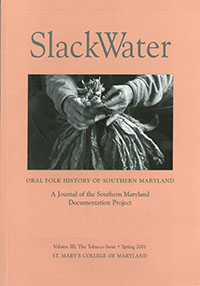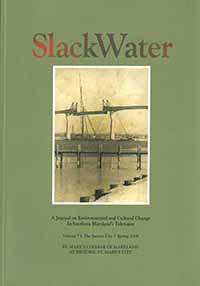Civil Rights, the Environment, and the Arts
When Harold Herndon, a former high school band instructor and later founder of Compliance Corporation, first came to St. Mary's County in 1960, he thought the drive would never end. "I caught the Greyhound bus in DC to come," Mr. Herndon recalled, "because I couldn’t find the place on a map, The bus stopped at every crossroads and it took forever to get down here. I was trying to figure out, what in the world have I gotten myself into?"
Mr. Herndon's impressions were shared by many of the newcomers. But the region really wasn't "untouched" by the outside world. Many of the same issues affecting the country were impacting St. Mary's, too, including civil rights and a growing environmental awareness.
In this portion of the exhibit, Mr. Fred Talbert and Mrs. Emma Hall recall the segregation and racism that characterized the region before the passage of the Civil Rights Act of 1964. Jay Penn Fleming's photographs document now boarded entrances for "colored," silent reminders of the region's -- and America's -- mid-20th-century with struggle with realizing its promise for all citizens.
The late Mrs. Hilda Mowery's story relates her efforts to assist single women through her locally famous bar and nightclub, The Pink Elephant. Many people also remember Mrs. Mowery as a chimney sweep!
Nor was the region devoid of people interested in the arts, and Mr. Herndon himself soon took up the charge when he formed his band, The Impacts. The Impacts played the old Take It Easy Ranch in Callaway, and served as the opening act. On the program were The Eagles and James Taylor.
In 1976, the St. Mary's Creative Arts Forum hosted a series of events inviting people to examine the impact of the "Instant City" on the county's residents. In Why Savon?, N. Lynn Erwin considers the meaning behind the late artist Susan Jones's silk-screened image of the Savon Gas Station, Great Mills Road's first 24-hour gasoline station located where the CVS now stands.
One of the greatest struggles for the environment in St. Mary's County came when, in 1968, plans developed to build an oil refinery on the Potomac River at Piney Point. Bayonne on the Potomac explores the epic event, and how some people don't think the battle is over.






